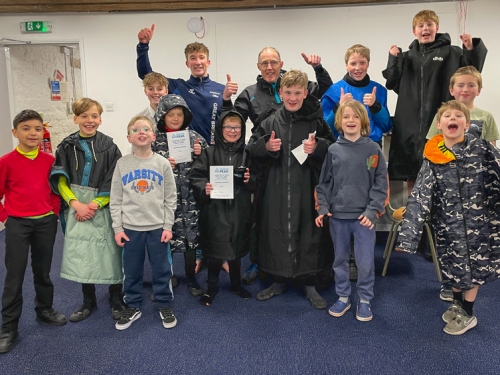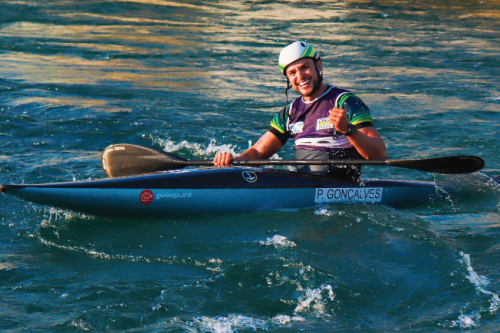
Evy delivers the goods at US Selection.
Racing Team Trials in Oklahoma City is always an exciting time. One year we had a tornado; the next, we had a snowstorm. So this year, as I stepped out of my car to watch the demonstration runs, the high winds that had seemingly come out of nowhere barely surprised me.
Oklahoma is one of the most urban courses that I race. The city skyline is highlighted in the background, and interesting architecture lines the otherwise bare grounds of the whitewater center. Green water flows through bright blue blocks shaping the rapids, reminding paddlers they are on an artificial course where the water behaves differently.

One of the unique features of Oklahoma is a diagonal hole near the bottom of the course. It's pretty small — looking at it from the side, you can hardly tell how fast the water moves through it — but getting the perfect push over it is tricky. In the past, course designers have used this feature as a bounce to an up, a challenging stagger sequence, or even an upstream in the hole.
This year, they opted for the stagger sequence on the first day of team selections. I spent the two weeks leading up to the race practicing moves in this hole and felt confident in any move — from any setup.
Kayak was up first, and I came through the gate exactly how I'd visualized, with a slight upstream edge during my jump to keep my boat dry. I planned to do the same in canoe — switch sides with my paddle just before the move to ensure I was on the upstream side. But as I went for my switch, the wind caught my paddle, twisting it around, and I missed my t-grip. I grasped for it for a couple seconds before finally landing my hand where it should go and futilely trying to make it back to the next gate without having to loop. Eventually, I made it back, but not without losing twenty seconds of crucial time on the course.

Wind on the course introduced so many new elements into racing. Switching in C1, of course, was really tricky, but I definitely got more used to it over the weekend. Instead of doing really fast switches as I went through a hole or a tricky stagger, I started planning them for more neutral parts of the course and giving myself ample time to correctly grab my paddle without it being blown away.
Another more obvious element was simply the copious movement of the gates. During large wind gusts, the gates were fully horizontal, making it difficult to plan where to aim for the next gate. Usually, I can cut under the gate with only millimeters to spare, especially with the thin life jackets on the PeakUK racer tops. During this race, however, I had to take much wider and more centered lines to ensure I could make the gates, regardless of where they were blown.

I came into the weekend with two goals: To win all my events and have solid paddling I was proud of. For U.S. team selections, there are three days of racing (two runs a day, best four runs count). That gives two 'throwaway runs' that don't count toward the overall results. I definitely used those runs, and learned a lot about racing in windy conditions. But I accomplished my goals and am super excited to make my fifth U.S. National team.

I am looking forward to a packed season and plan on racing all the World Cups, U23 World Championships, Pan-American Games, and of course, the World Championships and Olympic qualifier in London. I'm stoked to be a part of the Peak team yet again this year. Let's go for 2023!

Photos © Tom Dunning & Riversport Rapids










